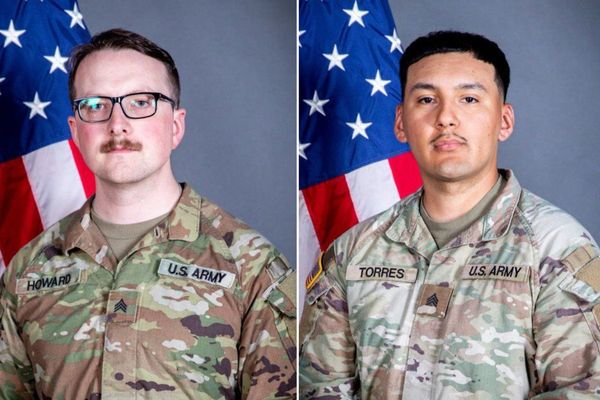
Nine years ago, the Chicago White Sox traded their top prospect, Fernando Tatis Jr., to the San Diego Padres for a 200-inning starting pitcher, James Shields. This week the Padres would not think about trading their best prospect for an All-Star, 600-at-bat outfielder like Steven Kwan but had no trouble giving up that top prospect, shortstop Leo De Vries, for a closer who throws only 65 innings, Mason Miller.
The trade deadline this year hammered home a truth four years in the making: when it comes to what wins in October, the expanded playoffs have changed player evaluation and team building. Relievers, especially hard-throwing, swing-and-miss relievers, become even more valuable in the postseason—starting pitchers less so. And thus, bullpen pieces become more valuable at the last-chance-for-gas that is the trade deadline.
The market this week became Reliever-palooza. Five closers, a set of twins and three of the seven hardest throwers in baseball were among the 40 relievers who were traded the past three days. Forty! While a front-of-a-rotation starter like Zac Gallen didn’t get enough interest to move.
At the forefront of the two scores of traded relievers were the trio among baseball’s most wicked flamethrowers: Miller (101.1 mph), Jhoan Duran (100.2) to the Philadelphia Phillies and Ryan Helsley (99.3) to the New York Mets—all teams that are threats to seize the pennant from the Los Angeles Dodgers. The Mets built a sick endgame with Helsley joining Ryne Stanek (98.5), Reed Garrett (97.8), Edwin Diaz (97.0) and Tyler Rogers, who may not throw hard but has been one of the game’s most reliable relievers for years.
Relief pitching becomes beachfront property this time of year. The prices paid for relievers were astronomical. The Mets, for instance, gave up three major league quality players for a setup reliever, Rogers. The Padres paid a steeper price for Miller than they did three years ago for Josh Hader (Robert Gasser, Dinelson Lamet, Taylor Rogers and Esteury Ruiz). Top 50 prospects De Vries and Eduardo Tait (to Minnesota in the Duran deal) were traded for relief pitchers. Kyle Finnegan was non-tendered by Washington nine months ago, now the playoff-bound Tigers traded for him.
Forget what you remember about what wins in October. Postseason baseball today is a race to bullpen the other team into submission. And it’s about having much more than the Big Three of the 2015 Kansas City Royals. It’s about going six or seven deep to shut down the other team from the fifth inning on night after night.
Teams don’t trust starters to pitch a third time through the lineup. They script which relievers will face runways of three or four hitters in an opposing lineup.
Check out how last postseason played out, as hits become rare after the third inning:
The expanded playoffs have succeeded in creating more buyers at the deadline and more interesting games in September. But the format change also has expanded the field of potential World Series teams. You don’t need shutdown starters to win in October. With a deep bullpen—and more off days in the postseason schedule—you can shorten games.
The lesson of the trade deadline is how drastically different postseason baseball has become. The grind of the 162-game regular season is meaningless once October hits. Then it becomes something else entirely. It becomes tournament baseball, the world’s biggest American Legion tournament.
Just remember how the most recent world champion played last October. The Dodgers won it all by going 11–5 in the tournament. Their starters were 4–4 and averaged 3.75 innings per start. Their relievers were 7–1.
Dodgers starters faced 18 batters or fewer nine times in 16 starts. Los Angeles went 7–2 in those abbreviated starts. Lather, rinse, repeat.
Updated post-deadline list of the best potential postseason bullpens: 1. Padres. 2. Mets. 3. Astros. 4. Mariners. 5. Brewers.
The Mariners (48 years), Padres (56 years) and Brewers (56) have the longest droughts among the five franchises that have never won the World Series. (The Rockies and Rays are the other two.) All three have become viable World Series picks.
Seattle was one of the biggest winners at the deadline. They picked up the two biggest bats available, Eugenio Suárez and Josh Naylor, and a key bullpen piece in Caleb Ferguson. The only current franchise never to have won a pennant just put itself in position to bring a World Series to Seattle.
SELBE: Winners and Losers of the 2025 MLB Trade Deadline
The Detroit Tigers had an underwhelming deadline. They acquired no difference makers, choosing to rely on their pitching development program to fix pitchers such as Chris Paddack, Charlie Morton, Kyle Finnegan, Codi Heuer, Paul Sewald, Randy Dobnak and Rafael Montero. I get the whole “pitching chaos” stuff—bullpenning run amok—but this haul felt light.
Still concerning: Detroit strikes out too much. Only the Rockies, Angels, Pirates and Red Sox whiff at a higher rate.
Key under-the-radar acquisition: Harrison Bader to the Phillies. Philadelphia needed a righthanded bat and plus defender for the outfield. I have never seen a high ceiling in Max Kepler, 32, and the Phillies have found that out. Bader might be more than a platoon guy. He has a higher slug against righties (.432) than Kepler (.366).
Biggest risk: the Blue Jays trading for Shane Bieber. He has thrown four major league games since the 2023 All-Star break and had a setback two months ago while rehabbing from Tommy John surgery. He’s made four minor league starts yet has not thrown more than 59 pitches while getting six days in between starts. But if Toronto can use the next two months to get him right, he’s a strike-thrower who gets hitters to chase and can be a Game 2 or 3 starter in a postseason series.
More MLB on Sports Illustrated
This article was originally published on www.si.com as MLB’s Trade Deadline Reflected the Hard Truth About Playoff Baseball.







